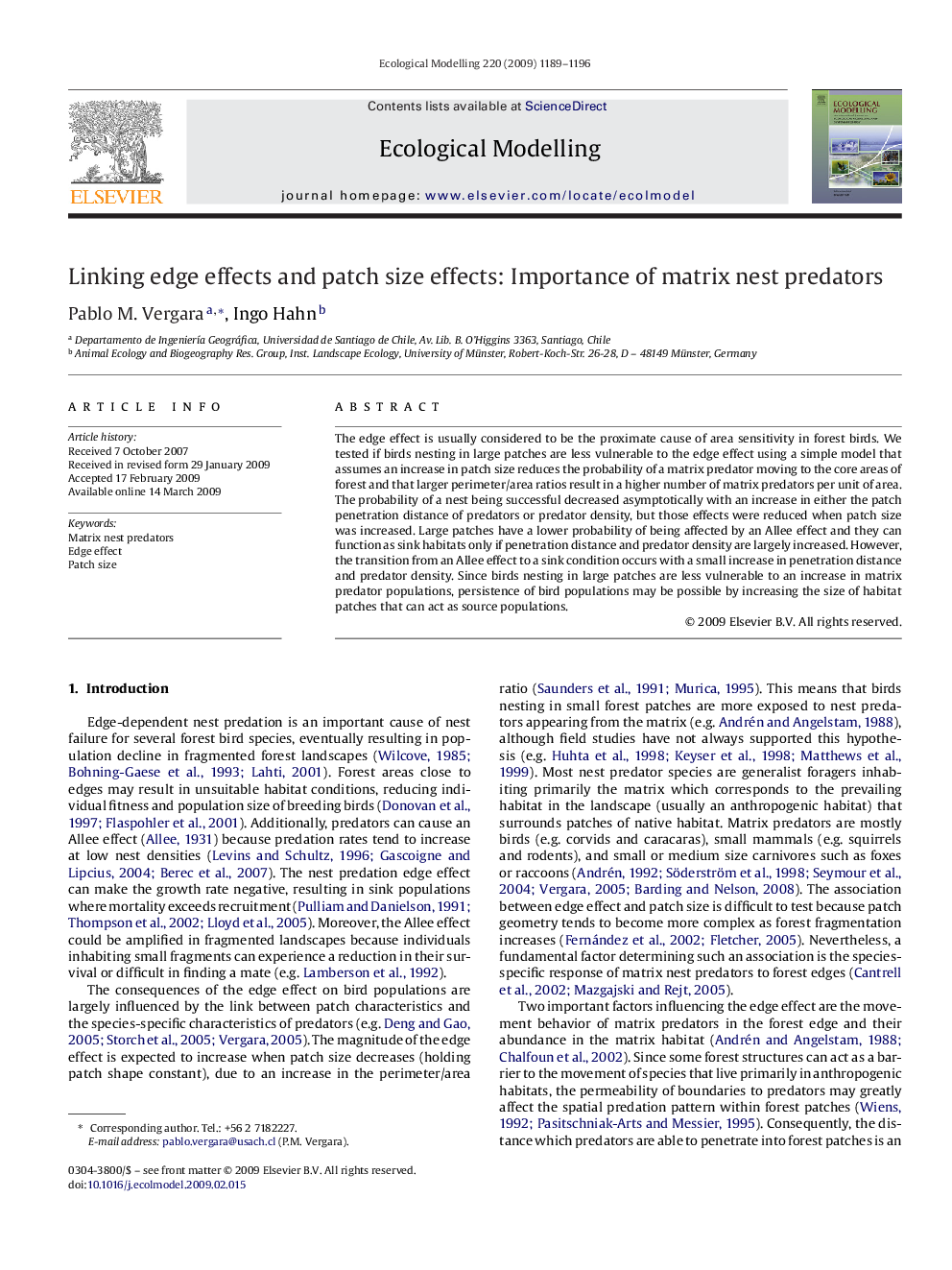| Article ID | Journal | Published Year | Pages | File Type |
|---|---|---|---|---|
| 4378100 | Ecological Modelling | 2009 | 8 Pages |
The edge effect is usually considered to be the proximate cause of area sensitivity in forest birds. We tested if birds nesting in large patches are less vulnerable to the edge effect using a simple model that assumes an increase in patch size reduces the probability of a matrix predator moving to the core areas of forest and that larger perimeter/area ratios result in a higher number of matrix predators per unit of area. The probability of a nest being successful decreased asymptotically with an increase in either the patch penetration distance of predators or predator density, but those effects were reduced when patch size was increased. Large patches have a lower probability of being affected by an Allee effect and they can function as sink habitats only if penetration distance and predator density are largely increased. However, the transition from an Allee effect to a sink condition occurs with a small increase in penetration distance and predator density. Since birds nesting in large patches are less vulnerable to an increase in matrix predator populations, persistence of bird populations may be possible by increasing the size of habitat patches that can act as source populations.
